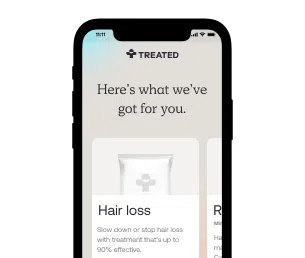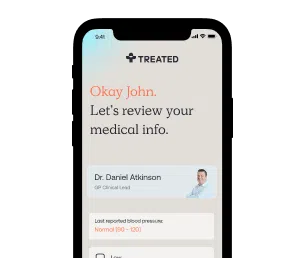Topical anaesthetics
Avoid pain from small procedures and injections.
Secure delivery
UK clinicians
Topical anaesthetics are applied straight to the skin. They numb your body so you can undergo small procedures without pain.
We’ll send pain prevention right to you. Order topical anaesthetics online and get expert aftercare from our clinicians.
Topical anaesthetics are used to temporarily numb your skin. They’re usually applied before a minor procedure, like a blood test or an injection. If you’re nervous about needles or sensitive to pain, they can make the experience much easier.
You can also use topical anaesthetics ‘off-label’ before a tattoo, cosmetic procedure or piercing. Off-label means they’re not licensed to be used like this, but we know it works. You just have to chat to a clinician first.
Topical anaesthetics usually come as a gel or a cream, so you just spread it straight onto the area before you have the procedure. Then it desensitises the area and you’re ready to go.
Topical anaesthetics are absorbed into the skin through the top layer of skin and into the dermis, the thickest layer of skin which has all the nerve endings. Topical anaesthetics focus on the nerve endings and block the sensation temporarily.
It makes the membranes of the nerve cells harder to pass through. This means electrical impulses can’t travel as easily from one cell to another.
Topical anaesthetics are licensed to numb the skin before minor medical procedures like blood tests, injections and removing warts or bumps. It’s also used for more involved treatments, like removing the skin on a leg ulcer or having a cervical biopsy. In these cases, you should ask the practitioner performing the procedure if they can give you a topical anaesthetic.
They’re also used for cosmetic procedures. Some of these include dermal fillers, botox injections, laser hair removal, waxing, piercings and tattoos. This isn’t a licensed use, so you’ll need to tell your clinician so they can advise you. You should also tell whoever is performing the procedure that you’re using a topical anaesthetic.

How we source info.
When we present you with stats, data, opinion or a consensus, we’ll tell you where this came from. And we’ll only present data as clinically reliable if it’s come from a reputable source, such as a state or government-funded health body, a peer-reviewed medical journal, or a recognised analytics or data body. Read more in our editorial policy.
Most topical anaesthetics have active ingredients from one of two types of chemical compounds, esters and amides. Some examples of esters include procaine and tetracaine, and some amides include lidocaine and prilocaine. All of these have local anaesthetic effects.
Topical anaesthetics usually come as creams or gels, like EMLA Cream and Ametop gel. There are also topical anaesthetic sprays, often containing lidocaine. This is usually sprayed straight onto the throat before a dental procedure. It’s not usually used on the skin, because it isn’t absorbed as well as creams and gels.
The type of topical anaesthetic you use will depend on what you’re using it for. That’s why it’s good to chat to a clinician first before you use them. There’s some evidence to suggest Ametop gel works better than EMLA cream for procedures that pierce the skin using needles, like blood tests.
For laser and microneedling, LMX4 has been shown to outperform both Ametop gel and EMLA cream. So it can really vary. Creams like EMLA and LMX4 are most commonly used for tattoos. It’s often easier to apply a cream than a gel over wider areas.
Remember that lots of topical anaesthetics have different active ingredients, so one might suit you better than another. For example, EMLA cream has lidocaine and prilocaine in it, while LMX4 Cream only contains lidocaine at a higher concentration. So if you’re sensitive to prilocaine, you might want to use LMX4 Cream instead.
Topical anaesthetics are a type of local anaesthetic. Local anaesthesia means it affects only a specific area of the body and doesn’t lead to loss of consciousness. Topical anaesthesia is unique because it has the same properties as local anaesthesia, but it’s absorbed through the surface of the skin.
There are a few other types of local anaesthetic, like epidurals, where the anaesthesia is injected into your spinal cord to numb specific nerves. There’s also general anaesthesia, which causes unconsciousness, pain relief and memory loss and stops you from moving. This is usually used for more serious surgeries, because it comes with risks.

How we source info.
When we present you with stats, data, opinion or a consensus, we’ll tell you where this came from. And we’ll only present data as clinically reliable if it’s come from a reputable source, such as a state or government-funded health body, a peer-reviewed medical journal, or a recognised analytics or data body. Read more in our editorial policy.

How we source info.
When we present you with stats, data, opinion or a consensus, we’ll tell you where this came from. And we’ll only present data as clinically reliable if it’s come from a reputable source, such as a state or government-funded health body, a peer-reviewed medical journal, or a recognised analytics or data body. Read more in our editorial policy.
Have something specific you want to know? Search our info below, or ask our experts a question if you can’t find what you’re looking for.

An effective numbing cream you apply to the skin before a procedure to reduce discomfort.

Effective pain relief for minor skin procedures. Works in 30-45 minutes and lasts for up to 6 hours.

Easy to use topical treatment that numbs your skin. Useful before minor procedures.

Registered with GMC (No. 4624794)
Meet Daniel
Registered with GPhC (No. 2202465)
Meet Sanjeda
Registered with GPhC (No. 2070724)
Meet Craig
Always read the leaflet that comes with your medication and tell us about any side effects you get.
We know health, but you know you.
Our experts tell you what’s safe, but you decide what’s best.
Answer a few questions and tell us about yourself. Get tailored advice from our clinicians so you can choose better.

Choose your treatment and how often you have it delivered.

We know things change. It’s the nature of life. We’ll check in regularly to make sure your treatment is still right for you.
Pause. Change. Skip. Start again. Any time you like.
Here are some other things we can help with.
Choose from our range of tablets and solutions. Get ongoing care and support from our experts.
Stop smoking treatments that can help you kick the habit forever, and reduce your risk of disease.
Tablets or injections. Tailored weight loss treatments combined with ongoing support from our experts.
We're making healthcare more about you. Sign up to our newsletter for personalised health articles that make a difference.
Disclaimer: The information provided on this page is not a substitute for professional medical advice, diagnosis, or treatment. If you have any questions or concerns about your health, please talk to a doctor.
We couldn't find what you're looking for.
Here's everything we treat. Or, if you're looking for something we don't have yet, you can suggest something.
If there’s a particular treatment or condition you’re looking for, tell us and we’ll look into it for you.
Submit your question here, or tell us if you’ve found an issue on our site.
We’ll get back to you very soon. We aim to respond to all queries in one working day.
You’re signed up to our newsletter. Keep an eye on your inbox for our latest update.
By clicking 'Subscribe now' you're agreeing to our Privacy Policy.
We’ve sent you an email asking you to confirm your email address.